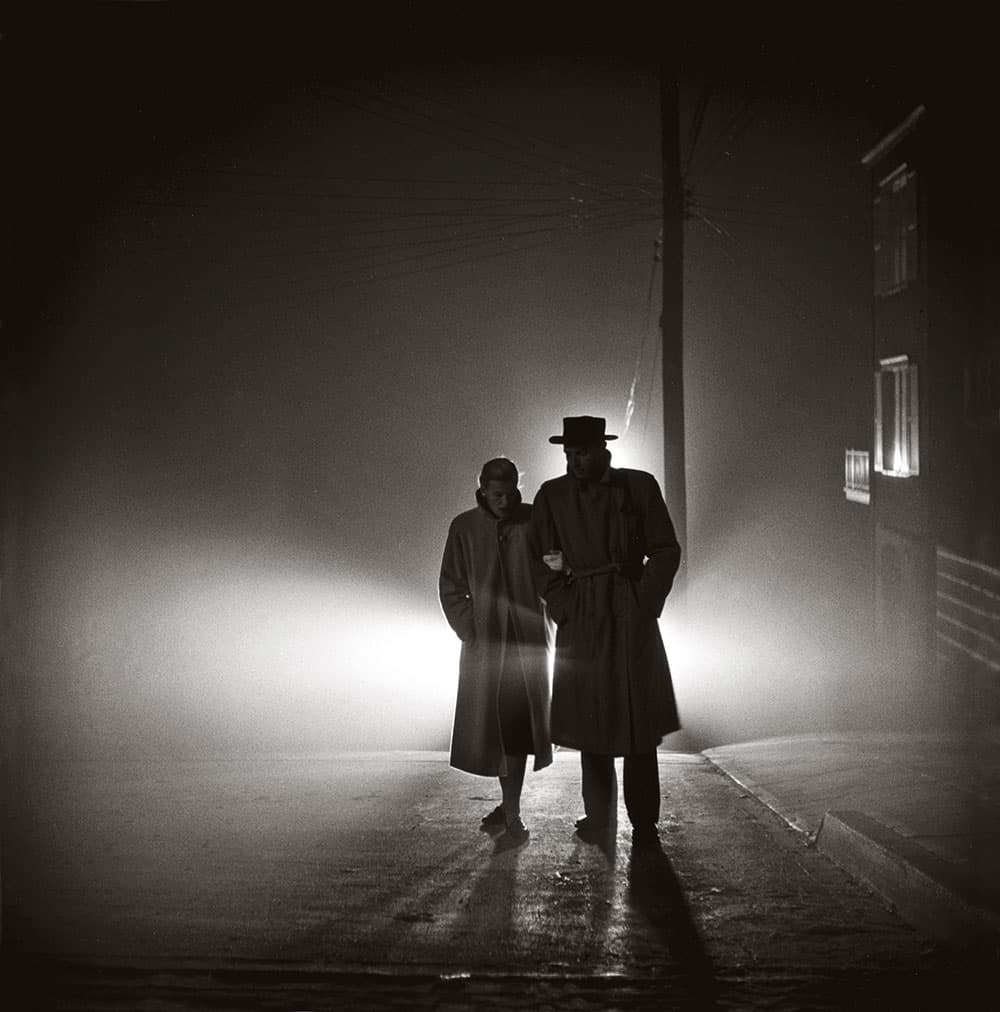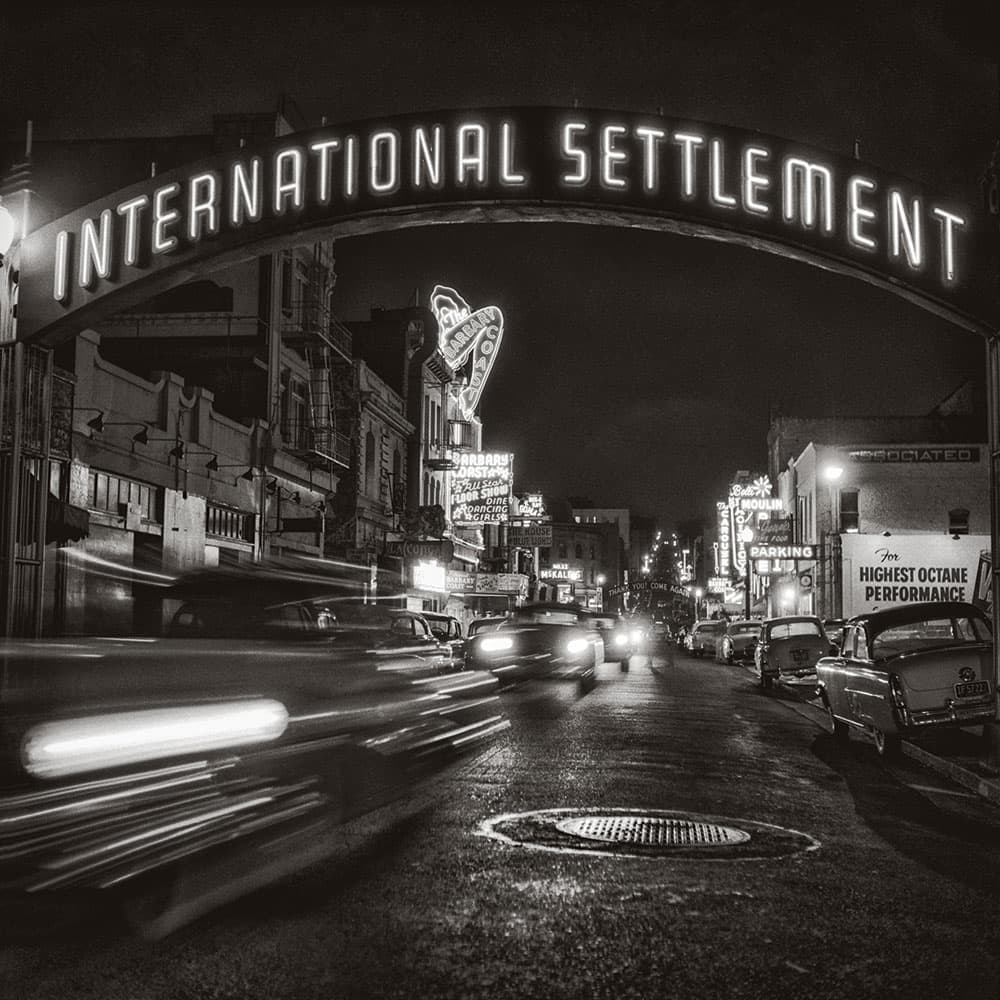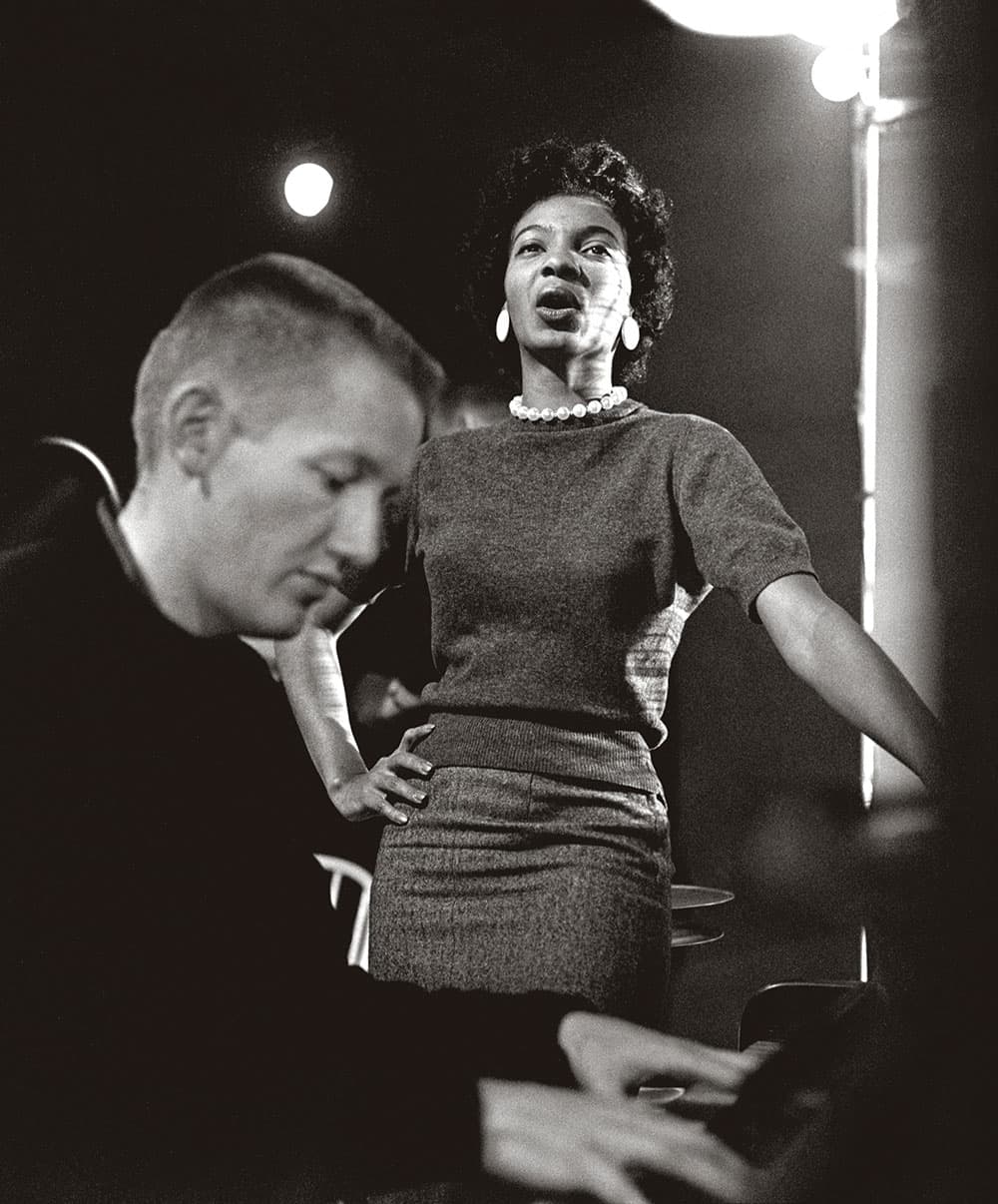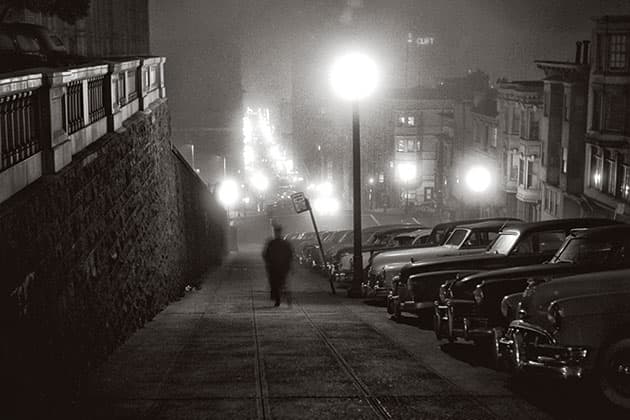
A classic ‘noir’ shot from downtown San Francisco. Using a tripod allowed Fred to get some cool long-exposure effects. Credit: Fred Lyon
San Francisco is one of the most influential cities in the world – an atmospheric place forever associated with the gold rush, gumshoe movies and Chinatown, beatniks and hippies, and more recently, the triumphs and excesses of Silicon Valley. Few photographers have a deeper knowledge of the city and its subcultures than Fred Lyon, a widely published documentary and portrait photographer who is still going strong at 93. Fred, who is more articulate and insightful than a lot of photographers half his age, has just released San Francisco Noir, a new collection of his classic black & white film images.
Moody night and low-light shots of the streets (and street life) of San Francisco dominate this fascinating chronicle of 1940 to 1960, at a time when very high ISOs or easily affordable and portable location lighting were something that Fred and his peers could only dream of. Of course, it helped to have such a myth-making metropolis to shoot. As Fred explains in his introduction to the book, ‘What a town! Bursting with energy, San Francisco seized fistfuls of its most doubtful characters, anointing them with instant celebrity – and morality be damned… Just turn up the collar of your trench coat, settle your fedora low on your head and strike a match to that cigarette dangling from your mouth. You’re in.’
Fred is not surprised by the enthusiastic reception San Francisco Noir has received, but this is more to do with his age and laconic character than an inherent lack of modesty. ‘I’ve been at this so long that few things surprise me when it comes to publications. Everything starts out being wonderful, then the publishing requirements are satisfied and I’m not very happy. But San Francisco Noir delights me as the old black & white images are so well digitised and the book is beautifully designed. The young designer disappeared with a bottle of scotch or maybe bourbon over a weekend and did a fantastic job. He picked all my favourite images, the ones that don’t always make the cut.’

Steep hills, trams, handsome old houses – this could only be the city of San Francisco. Credit: Fred Lyon
Learning on the job
Fred first became interested in photography as a teenager, but his reasons weren’t particularly lofty. ‘I knew a guy who had a camera and he always seemed to have cute girls around him. I thought that if I had a camera, maybe I’d get girls, too. By the time I discovered that a camera wasn’t the answer to getting girls, I was already hooked.’
A flick through Fred’s book would suggest that classic film noir movies, such as Double Indemnity, and documentary photography gods, such as Brassaï or Doisneau, influenced him, but this is only partially the case. ‘At the beginning of my career working for magazines, I was lurching forward and had no time to think about influences, but looking back I can see that Arnold Genthe cast a spell. He was way ahead of the curve in terms of his Chinatown images, and I look for his vision every time I go there. He practised street photography before the term existed, and was essentially a portrait photographer. Street and documentary photography is essentially about people at all levels.’
Fred cut his teeth working for newspapers and magazines, including Vogue and Life. The importance of careful, elegant composition was drilled into him from the start. ‘I knew I wanted to make imagery that was aesthetically pleasing and well composed, with strong graphic shapes.’ He also learned to turn technical challenges to his advantage, as can be seen in the book’s more overtly ‘noir’ shots.
‘The San Francisco fog and night are very useful for covering up the less attractive works of man,’ he notes wryly. ‘They also enable you to add a sense of mystery and romance, which I also got from my time when I worked as a fashion photographer in New York. My wife is a former fashion model. I had a continued interest in fashion photography. There is something about the optimism and romanticism which has inspired me and kept a smile on my face.’

This looks like it could be a scene from Double Indemnity but it’s a candid street shot from the 1950s. Credit: Fred Lyon
Pragmatic approach
Fred’s choice of image format was dictated by pragmatism as much as aesthetics. ‘I shot in the square format for a long time, but got bored. Also, I discovered I was being paid by magazines on a page rate. If I made horizontal pictures, maybe I’d get paid for a half page, as getting a spread was rare. So I learned to force verticals, to try to get the full-page rate. The vertical format also suits San Francisco, so it worked out well for me. It is still the case where a lot of documentary and street photographers become “stuck” on landscape format and they should try other approaches.’
When it came to taking night shots in the notoriously foggy city, or low-light shots in nightclubs and dive bars, Fred just had to work it out as he went along. ‘I shot Kodachrome at the beginning which had a film speed of something like ASA 6! I have had a million young photographers look at my black & white work for clues and I have to say, it wasn’t easy technically. I soon learned that my tripod and my wastebasket were my best friends – the tripod enabled me to take longer exposures in low light, and the wastebasket for editing my work! Working in fashion and for magazines like Life also taught me to always make extra exposures, just in case; while working for Sports Illustrated taught me how to work fast. With sports photography, you had to get the right exposure at the peak of the action. When I started out there were no exposure meters, either; you just had to figure it out.’
Fred recounts how his varied magazine commissions presented him with a range of photographic challenges, so he had to learn quickly on the job. ‘I even had to figure out aerial and underwater photography and ended up spending a lot on specialist gear I didn’t use again. I learned something each time, though.’

Fred has long been inspired by the ethnic mix of the city, seen here in another masterful long exposure image. Credit: Fred Lyon
Jazz hands
San Francisco Noir is full of classic sights and scenes, with trams, atmospheric shots of Chinatown, steep, misty streets with elegant old houses and dive bars. Jazz fans will love the book as it contains lots of evocative shots of jazz clubs and performers – the city has long embraced this hugely influential musical genre, and jazz was loved by the beatniks and hipsters who preceded the whole Haight-Ashbury scene. San Francisco is also the birthplace of the Summer of Love. There aren’t any hippies in the book for a simple reason – it is about Fred’s black & white photography, and he started shooting colour around 1960, a long time before the golden age of the Grateful Dead and Jefferson Airplane. ‘From 1960 onwards it was like someone flipped a switch and colour photography really caught on. About 10-12 years ago the whole photography market changed, and I realised I needed more cashf low. There was clearly a demand for old black & white prints from collectors, so I grabbed my shoebox of negatives and this led to the book. It’s good to see this renaissance of interest in black & white. Those of us who came from that era had to learn to see in black & white, and this is still important in the digital era too – it’s not just about getting rid of colour.’
San Francisco has changed exponentially since Fred first started shooting the city seriously. Physical mobility issues mean Fred can’t go out and about like he used to, but he still loves the place and is still passionate about photography. ‘I miss the kids playing in the street. Maybe they are inside watching TV or on their iPhones. But a lot of the old San Francisco is still there. They can’t take the fog away, the light is different here. The bridges won’t quit, and we still have these steep hills and streets and cable cars. Everything has changed a bit but all the cities I love have also changed. I wouldn’t want to live in a city that wasn’t in some process of change or growth. I complain about the traffic and lack of parking, but San Francisco still has the best food. The city is the gateway to the Pacific and is very ethnically diverse. At my age, food is my last temptation!’
Fred claims that image making has been an ‘itch’ he has to scratch, even now. ‘I wake up in the middle of the night thinking about how I could make a particular picture. I couldn’t be more surprised to still be around at this age… at one time I felt anyone over 30 would probably want to be put out of their misery. But of course I’ve changed my mind! I am having such a good time and good things are happening. I am still so excited by the possibilities of photography.’

This is also a music city. Performer Michelle Johnson sings here at a jazz poetry reading. Credit: Fred Lyon
Fred’s cameras and lenses
‘When I came back out to the West Coast after spending time in the navy and in New York doing fashion, I used Rolleiflexes. Many images in the book were taken with Rolleis, until Hasselblads appeared. Hasselblad enabled me to change the film cassettes and used a wideangle lens, a more standard 80mm and one of the first telephotos, which I think was a 150mm. As I started to get busy, I ended up buying terrifying amounts of specialised camera gear, too.’
Despite his long history in film photography, Fred is very open-minded about digital photography and loves his Nikon D300. ‘There are a lot of people who think I should be clinging to the darkroom experience but I have spent enough time in there, and I never claimed to be great at film developing. Sometimes I get a whiff of the chemistry and it stirs something in my memory, but for me, digital has been wonderful. Indeed, if it hadn’t have been for the digital revolution, this book would never have been published. We have been able to rescue a lot of images which suffered accidents in processing and wear and tear on the negatives in the 60-70 years since they were taken.’

Fred Lyon, 93, is a fourth-generation San Francisco native who has spent much of his career shooting the city for newspapers and magazines, including Vogue and Life. A new book of his classic black & white images, San Francisco Noir, is available now. ISBN 978- 1616896515, Princeton Architectural Press, £30.








